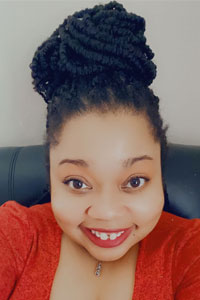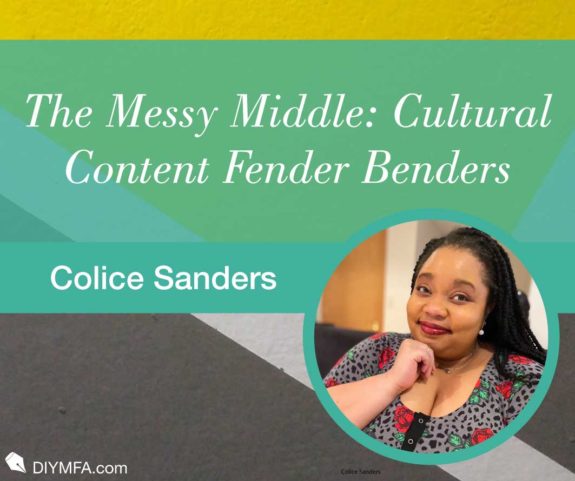Last year, we dedicated ourselves to exploring the messy middle of inclusive writing by reflecting on ways to craft complex characters and build dynamic worlds that connect with readers from marginalized identity groups. We decided that we will answer the call for diverse and inclusive writing by being specific, honest, and intentional with our representations of marginalized identities.
To achieve this goal, we recognized that we must move beyond surface-level representations of diversity and instead strive to make invisible systems of privilege and inequality visible to our readers. We will avoid the temptations of cultural appropriation by being prepared to be held accountable for our cultural depictions. However, what if, despite our commitment to doing all of these things, we still somehow get “it” wrong?
The fear of getting “it” wrong (being politically incorrect) or being “called out” (and canceled) is a common barrier to inclusive writing, but perhaps our reactions and beliefs about political correctness are what needs adjusting. This post will offer a framework for responding to concerns about cultural representations in our published work and social media posts.
Political Correctness Consciousness
The internet would feel like less of a cultural war zone if we viewed political correctness as less of an attempt to silence free speech or a trendy obsession with “labels”. “Why can’t we all just be humans, humaning?” is often asked when it comes to concerns about political correctness. The answer will always be that privilege and inequality exist; we do not all experience the world in the same way.
Political correctness is a sometimes imperfect attempt to be conscious of the fact that some marginalized identities have not had the access or political power to define their own experiences. Historically, the terms used to reference marginalized communities have been ascribed to them without their input and are often steeped in histories of inaccuracy, erasure, violence, and bias. What we often dismiss as identity politics is, in reality, an attempt at respecting and understanding the experiences of others.
Despite our best intentions and efforts, we cannot know the “correct” terms for every marginalized identity. Therefore, when we are approached about problematic, outdated, and offensive terms, we can apologize and then lean in to listen, without getting defensive.
Called Out or Called In?
I believe in the power of dialogue to create systematic change. However, bullying, stalking, threats of harm, and demands to change your content are not acceptable ways to have these conversations and should not be tolerated.
It is sometimes difficult to determine if the critiques we receive are from internet trolls or people who have genuinely been negatively impacted by our writing. There is a very important difference between the two. Are we being called out for attention or are we being called in because someone finds value in our work? What if we shifted our focus from ourselves and placed it on the person raising the concern?
If we imagine our content as our vehicle, we may be able to better visualize how our writing can negatively impact our readers. Somehow, we accidentally ran a red light and crashed into someone else’s car. It seemed like a light fender bender, nothing dramatic but, as we stare out our windshield, the driver looks really hurt, and other people have gathered around them. Everyone seems very angry at us.
Content Fender Benders
A content fender benderTM (just kidding) happens when readers or critics take us to task for cultural appropriation, reductive stereotypes, tone deafness, or otherwise harmful misrepresentations. Thinking of our content as a vehicle can be a useful metaphor because it encourages us to spend less time deciphering who was at fault and, instead, focus on the people who were harmed and to determine our next steps.
Who’s at the Center?
Ring Theory, developed by clinical psychologist Susan Silk and Barry Goldman, is a simple guide for navigating everyday conversations about difficult or traumatic events. The theory is often utilized in diversity and inclusion, allyship, and crisis management spaces. Silk came up with the idea while battling breast cancer and feeling drained by having to manage her loved one’s feelings over her health crisis.
Ring Theory asks us to first identify who is at the center of the crisis and to place them in a circle. Everyone outside of the immediate circle should work together to offer support for the people in the circle. Those outside of the circle should resist processing, grieving, or complaining to people inside the circle and, instead, find other spaces to work through their feelings. The goal is to have support flowing into the inner circle and complaints flowing outwards. I find this theory particularly applicable because it emphasizes self-care and accountability.
Put on Your Mask First
If you’ve ever flown on an airplane, you are familiar with the reminder to put your mask on first during a crisis before attending to others. I recommend the same strategy for navigating cultural content fender benders. Log off and take a beat.
Unlike an actual car crash, we can take more time to check in with our feelings before we work through the situation. While it is typically not a good idea to completely ignore a complaint (unless you’re sure the person is trolling you), responding quickly without getting in touch with our emotions can be just as harmful. Consider thanking the commenter for bringing it to your attention or posting a statement that you are taking time to reflect on the concern.
Ideally, when we step out of our metaphorical “car”, our response should be focused on hearing and understanding how our content negatively affected the other person. But if we are hurt, embarrassed, uninformed, or angry, we can make the situation worse. Once we have made the time to check in with our feelings, we can better address the issue.
Turn into the Skid
Trying to avoid or smooth over these types of concerns can make them worse so, for the love of all that is caffeinated and pumpkin spice in this land, avoid replying with these types of responses:
AVOIDANCE AND DENIAL
“I didn’t intend to hit you”, “I barely hit you”, or “It’s not my fault that you are hurt.”
Don’t get distracted by fault and avoid centering yourself and focusing on your initial intent. Instead, try to ask open-ended questions to better understand how the content affected them. Also remember, we are listening to understand their experience, not for them to educate or fix us.
AWKWARD SELF DISCLOSURES
“I would never intentionally hit you” or “I’m two teaspoons native on my neighbor’s dog’s second cousin’s side of the family”.
Impromptu self-disclosure of genetic ancestry or having friends from marginalized groups does little to address the collision the person experienced. It especially misses the point, because some identity groups do not have the privilege of selectively disclosing their cultural identity as a means of avoiding accountability.
BRING OUT THE HISTORIAN
“Actually, hair extensions were first used in Europe in 16 b.c.”
The conjuring of an inner Wikipedia historian does little to account for the obstacles and lived experiences that some cultural markers have on marginalized people. Trying to use history is just another way to avoid the issue.
There are obviously a lot of nuances that come with this advice, when considering the context of the incident and how to best respond. In summary, my best advice for navigating these situations is to lead with our humanity, take responsibility for negatively impacting others, and most importantly, focus on the center of the circle.

Colice Sanders is a blogger and diversity, equity, and inclusion facilitator. Colice writes nonfiction, poetry, and memoir. Her blog, A Reason to Rise, chronicles her journey of radical self-acceptance through the lens of childhood trauma.
You can also reach her on LinkedIn and Instagram.







